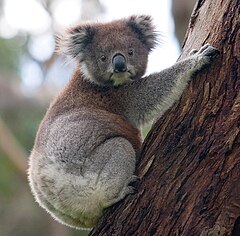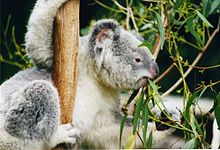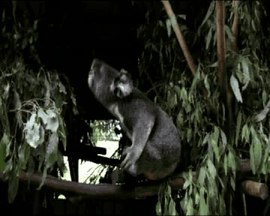Thursday, May 31, 2018
Throwback Thursday
In 1980 I was a delegate to the National Education Association. I decided to drive to California. I took my Mother and Sister with me and we had a great trip. We started in Ames; drove to San Francisco and then to Los Angeles and came back through Phoenix and back to Colorado and then home.
We stopped for breakfast in Winnemucca, NV and I decided that I would hit the slot machine. So I was going to lose $5 (just to do it). So I started with the nickel slot and kept getting a little pot and finally had 3 dollar coins and all of a sudden JACKPOT
The coins just coming out and when they were done the lady who was the cashier said...."just wait" . She filled the machine and it started in giving me more money. I got three big cups of money. Mom was paying for breakfast (the only time she paid) and I told her that I had just gotten a JACKPOT. She she we should get out of town.
So we did. Threw the money in the trunk and off we went...over $200.
I kept the money until we started to home and we stopped at Albuquerque. I knew what I wanted. Here it is!
The stones are from the Kingman mine.
It is marked Sterling and WNez is the artist's name.
It has gone through two or three watches.
I would say that is the best $5 I have ever spent.
Wednesday, May 30, 2018
Tuesday, May 29, 2018
Toad Tales
From Wikipedia, the free encyclopedia
| Koala Temporal range: 0.7–0 Ma Middle Pleistocene – Recent | |
|---|---|
 | |
| Binomial name | |
| Phascolarctos cinereus (Goldfuss, 1817) | |
 | |
| Koala range (red – native, purple – introduced) | |
The koala (Phascolarctos cinereus, or, inaccurately, koala bear[a]) is an arborealherbivorous marsupial native to Australia. It is the only extant representative of the family Phascolarctidae and its closest living relatives are the wombats. The koala is found in coastal areas of the mainland's eastern and southern regions, inhabiting Queensland, New South Wales, Victoria, and South Australia. It is easily recognisable by its stout, tailless body and large head with round, fluffy ears and large, spoon-shaped nose. The koala has a body length of 60–85 cm (24–33 in) and weighs 4–15 kg (9–33 lb). Pelage colour ranges from silver grey to chocolate brown. Koalas from the northern populations are typically smaller and lighter in colour than their counterparts further south. These populations possibly are separate subspecies, but this is disputed
Koalas typically inhabit open eucalypt woodlands, and the leaves of these trees make up most of their diet. Because this eucalypt diet has limited nutritional and caloric content, koalas are largely sedentary and sleep up to 20 hours a day. They are asocial animals, and bonding exists only between mothers and dependent offspring. Adult males communicate with loud bellows that intimidate rivals and attract mates. Males mark their presence with secretions from scent glands located on their chests. Being marsupials, koalas give birth to underdeveloped young that crawl into their mothers' pouches, where they stay for the first six to seven months of their lives. These young koalas, known as joeys, are fully weaned around a year old. Koalas have few natural predators and parasites, but are threatened by various pathogens, such as Chlamydiaceae bacteria and the koala retrovirus, as well as by bushfires and droughts.
Koalas were hunted by indigenous Australians and depicted in myths and cave art for millennia. The first recorded encounter between a European and a koala was in 1798, and an image of the animal was published in 1810 by naturalist George Perry. Botanist Robert Brown wrote the first detailed scientific description of the koala in 1814, although his work remained unpublished for 180 years. Popular artist John Gould illustrated and described the koala, introducing the species to the general British public. Further details about the animal's biology were revealed in the 19th century by several English scientists. Because of its distinctive appearance, the koala is recognised worldwide as a symbol of Australia. Koalas are listed as Vulnerable by the International Union for Conservation of Nature.[1] The Australian government similarly lists specific populations in Queensland and New South Wales as Vulnerable.[4] The animal was hunted heavily in the early 20th century for its fur, and large-scale cullings in Queensland resulted in a public outcry that initiated a movement to protect the species. Sanctuaries were established, and translocationefforts moved to new regions koalas whose habitat had become fragmented or reduced. The biggest threat to their existence is habitat destruction caused by agriculture and urbanisation
...
The koala is classified with wombats (family Vombatidae) and several extinct families (including marsupial tapirs, marsupial lionsand giant wombats) in the suborder Vombatiformes within the order Diprotodontia.[11] The Vombatiformes are a sister groupto a clade that includes macropods (kangaroos and wallabies) and possums.[12] The ancestors of vombatiforms were likely arboreal,[8] and the koala's lineage was possibly the first to branch off around 40 million years ago during the Eocene.[13]
The modern koala is the only extant member of Phascolarctidae, a family that once included several genera and species. During the Oligocene and Miocene, koalas lived in rainforests and had less specialised diets.[14] Some species, such as the Riversleigh rainforest koala (Nimiokoala greystanesi) and some species of Perikoala, were around the same size as the modern koala, while others, such as species of Litokoala, were one-half to two-thirds its size.[15] Like the modern species, prehistoric koalas had well developed ear structures which suggests that long-distance vocalising and sedentism developed early.[14] During the Miocene, the Australian continent began drying out, leading to the decline of rainforests and the spread of open Eucalyptus woodlands. The genus Phascolarctos split from Litokoala in the late Miocene[14][16] and had several adaptations that allowed it to live on a specialised eucalyptus diet: a shifting of the palate towards the front of the skull; larger molars and premolars; smaller pterygoid fossa;[14] and a larger gapbetween the molar and the incisor teeth.[17]
During the Pliocene and Pleistocene, when Australia experienced changes in climate and vegetation, koala species grew larger.[15] P. cinereus may have emerged as a dwarf form of the giant koala (P. stirtoni). The reduction in the size of large mammals has been seen as a common phenomenon worldwide during the late Pleistocene, and several Australian mammals, such as the agile wallaby, are traditionally believed to have resulted from this dwarfing. A 2008 study questions this hypothesis, noting that P. cinereus and P. stirtoni were sympatric during the middle to late Pleistocene, and possibly as early as the Pliocene.[18] The fossil record of the modern koala extends back at least to the middle Pleistocene.[19]
...
Koalas are herbivorous, and while most of their diet consists of eucalypt leaves, they can be found in trees of other genera, such as Acacia, Allocasuarina, Callitris, Leptospermum, and Melaleuca.[52] Although the foliage of over 600 species of Eucalyptus is available, the koala shows a strong preference for around 30.[53] They tend to choose species that have a high protein content and low proportions of fibre and lignin.[46] The most favoured species are Eucalyptus microcorys, E. tereticornis, and E. camaldulensis, which, on average, make up more than 20% of their diet.[54] Despite its reputation as a fussy eater, the koala is more generalist than some other marsupial species, such as the greater glider. Since eucalypt leaves have a high water content, the koala does not need to drink often;[52] its daily water turnover rate ranges from 71 to 91 ml/kg of body weight. Although females can meet their water requirements from eating leaves, larger males require additional water found on the ground or in tree hollows.[46] When feeding, a koala holds onto a branch with hindpaws and one forepaw while the other forepaw grasps foliage. Small koalas can move close to the end of a branch, but larger ones stay near the thicker bases.[55] Koalas consume up to 400 grams (14 oz) of leaves a day, spread over four to six feeding sessions.[56] Despite their adaptations to a low-energy lifestyle, they have meagre fat reserves and need to feed often.[57]
Because they get so little energy from their diet, koalas must limit their energy use and sleep 20 hours a day;[58] only 4 hours a day are spent in active movement.[59] They are predominantly active at night and spend most of their waking hours feeding. They typically eat and sleep in the same tree, possibly for as long as a day.[60] On very hot days, a koala may climb down to the coolest part of the tree which is cooler than the surrounding air. The koala hugs the tree to lose heat without panting.[61][62] On warm days, a koala may rest with its back against a branch or lie on its stomach or back with its limbs dangling.[58] During cold, wet periods, it curls itself into a tight ball to conserve energy.[60] On windy days, a koala finds a lower, thicker branch on which to rest. While it spends most of the time in the tree, the animal descends to the ground to move to another tree, walking on all fours.[58] The koala usually grooms itself with its hindpaws, but sometimes uses its forepaws or mouth.[63]
Social spacing
Koalas are asocial animals and spend just 15 minutes a day on social behaviours. In Victoria, home ranges are small and have extensive overlap, while in central Queensland they are larger and overlap less.[64] Koala society appears to consist of "residents" and "transients", the former being mostly adult females and the latter males. Resident males appear to be territorial and dominate others with their larger body size.[65]Alpha males tend to establish their territories close to breeding females, while younger males are subordinate until they mature and reach full size.[66] Adult males occasionally venture outside their home ranges; when they do so, dominant ones retain their status.[64] When a male enters a new tree, he marks it by rubbing his chest gland against the trunk or a branch; males have occasionally been observed to dribble urine on the trunk. This scent-marking behaviour probably serves as communication, and individuals are known to sniff the base of a tree before climbing.[67] Scent marking is common during aggressive encounters.[68] Chest gland secretions are complex chemical mixtures—about 40 compounds were identified in one analysis—that vary in composition and concentration with the season and the age of the individual.[69]
Adult males communicate with loud bellows—low pitched sounds that consist of snore-like inhalations and resonantexhalations that sound like growls.[70] These sounds are thought to be generated by unique vocal organs found in koalas.[42] Because of their low frequency, these bellows can travel far through air and vegetation.[71] Koalas may bellow at any time of the year, particularly during the breeding season, when it serves to attract females and possibly intimidate other males.[72] They also bellow to advertise their presence to their neighbours when they enter a new tree.[71] These sounds signal the male's actual body size, as well as exaggerate it;[73] females pay more attention to bellows that originate from larger males.[74] Female koalas bellow, though more softly, in addition to making snarls, wails, and screams. These calls are produced when in distress and when making defensive threats.[70] Young koalas squeak when in distress. As they get older, the squeak develops into a "squawk" produced both when in distress and to show aggression. When another individual climbs over it, a koala makes a low grunt with its mouth closed. Koalas make numerous facial expressions. When snarling, wailing, or squawking, the animal curls the upper lip and points its ears forward. During screams, the lips retract and the ears are drawn back. Females bring their lips forward and raise their ears when agitated.[75]
The koala is featured in the Dreamtime stories and mythology of indigenous Australians. The Tharawal people believed that the animal helped row the boat that brought them to the continent.[131] Another myth tells of how a tribe killed a koala and used its long intestines to create a bridge for people from other parts of the world. This narrative highlights the koala's status as a game animal and the length of its intestines.[132] Several stories tell of how the koala lost its tail. In one, a kangaroo cuts it off to punish the koala for being lazy and greedy.[133] Tribes in both Queensland and Victoria regarded the koala as a wise animal and sought its advice. Bidjara-speaking people credited the koala for turning barren lands into lush forests.[134] The animal is also depicted in rock carvings, though not as much as some other species.[135]
...
While urbanisation can pose a threat to koala populations, the animals can survive in urban areas provided enough trees are present.[165] Urban populations have distinct vulnerabilities: collisions with vehicles and attacks by domestic dogs kill about 4,000 animals every year.[103] Injured koalas are often taken to wildlife hospitals and rehabilitation centres.[165] In a 30-year retrospective study performed at a New South Wales koala rehabilitation centre, trauma (usually resulting from a motor vehicle accident or dog attack) was found to be the most frequent cause of admission, followed by symptoms of Chlamydia infection.[166] Wildlife caretakers are issued special permits, but must release the animals back into the wild when they are either well enough or, in the case of joeys, old enough. As with most native animals, the koala cannot legally be kept as a pet in Australia or anywhere else.[167]
Monday, May 28, 2018
Molly and Todd on Monday
Molly here,
B G and Todd and I are not happy with the temperature...98.8 degrees.
No happy.
This is our monthly bunch of flowers.
We like them. Our pictures this week are here but we haven't taken any of them together.
Then our cousins from Minnesota stopped to see us.
Todd stayed in the bottom of the back of the hallway.
But I went over and got treats and scratches. They were fun. B G said it was fun to reminisce about the family.
Then Todd came out after they left and came out so
B G took some pictures of him.
So I guess I don't have any else to say. B G said that the last two pictures were nice.
B G and I figure that Todd likes sit down there because the air conditioner blows on us there...
Thanks for stopping to see us. Woof!
B G and Todd and I are not happy with the temperature...98.8 degrees.
No happy.
This is our monthly bunch of flowers.
We like them. Our pictures this week are here but we haven't taken any of them together.
Then our cousins from Minnesota stopped to see us.
Todd stayed in the bottom of the back of the hallway.
But I went over and got treats and scratches. They were fun. B G said it was fun to reminisce about the family.
Then Todd came out after they left and came out so
B G took some pictures of him.
So I guess I don't have any else to say. B G said that the last two pictures were nice.
B G and I figure that Todd likes sit down there because the air conditioner blows on us there...
Thanks for stopping to see us. Woof!
Sunday, May 27, 2018
Apiarian,
"Were I to be the founder of a new sect,
I would call them Apiarians, and, after the example of the bee,
advise them to extract the honey of every sect."
- Thomas Jefferson
“The purpose of life is not to be happy.
It is to be useful, to be honorable, to be compassionate,
to have it make some difference
that you have lived and lived well.”
― Ralph Waldo Emerson
"Blind don't mean you can't, you know, listen."
~Stevie Wonder (b.1950)
Kindness is the language which the deaf can hear and the blind can see. ~ Mark Twain
How beautiful a day can be, when kindness touches it!
~ George Elliston
When you are kind to others,
it not only changes you, it changes the world.
~ Harold Kushner
“The earth laughs in flowers.”
― Ralph Waldo Emerson
“Ours is a world of nuclear giants and ethical infants.
We know more about war than we know about peace,
more about killing than we know about living.
We have grasped the mystery of the atom
and rejected the Sermon on the Mount.”
~Omar Nelson Bradley
"To the extent to which you know yourself,
and we are all more alike than different,
you can know others. When you love yourself,
you will love others. And to the depth and extent
to which you can love yourself,
only to that depth and extent will you be able to love others."
~Leo Buscaglia (1924-1998)
“Do not wait for life. Do not long for it.
Be aware, always and at every moment,
that the miracle is in the here and now.”
- Marcel Proust
Subscribe to:
Posts (Atom)






























